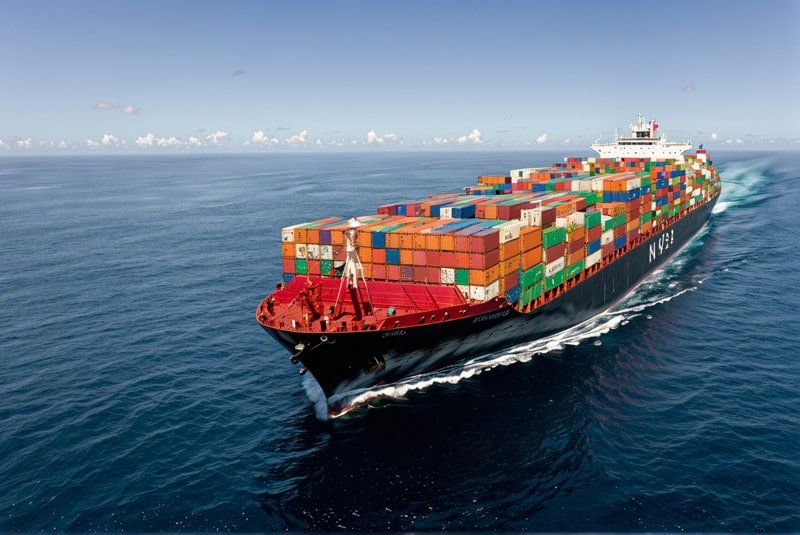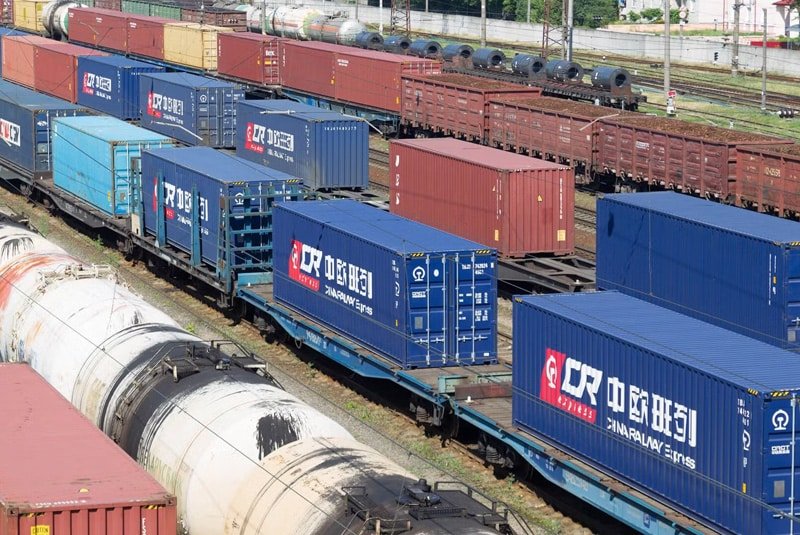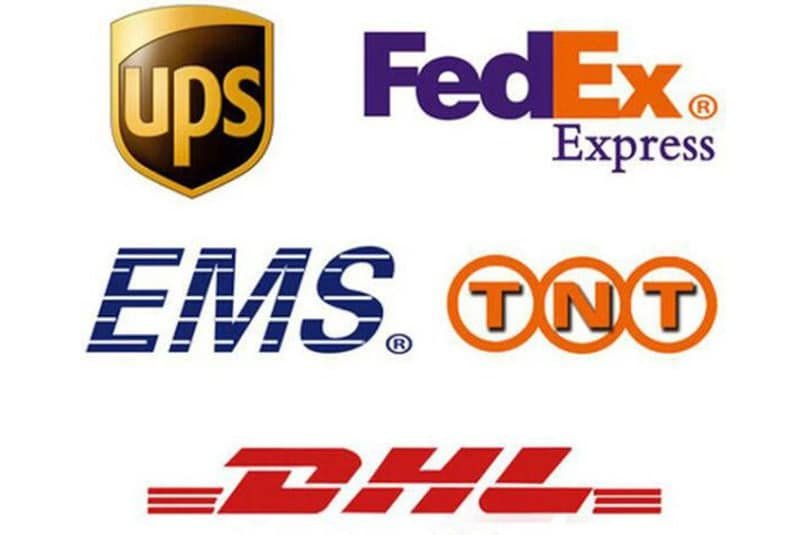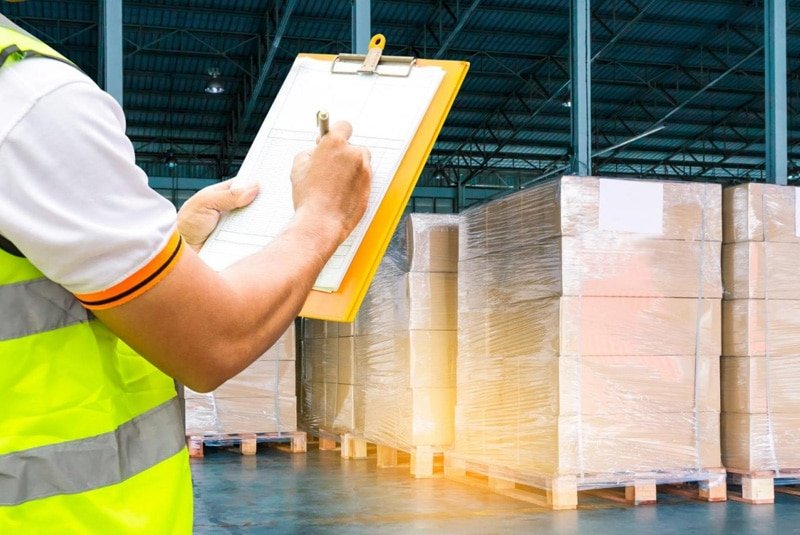1. Introduction
Overview of China-Somalia trade relationship
China now stands as one of Somalia’s most important trading partners and their trading relationship has become a lot stronger over the last decade. Because of Chinese involvement in infrastructure, telecommunications and power in Somalia, the demand for shipping between the two countries has risen greatly. Somalia mainly imports manufactured products, electronic goods, textiles and machinery from China, but it exports livestock and agricultural products as well as raw materials in return.
Importance of shipping connections between China and Somalia
At present, the economy of Somalia greatly relies on strong transport links with China which is also increasing its presence in Africa. The trade routes make it possible for Somalia to obtain construction materials, electronics, textiles and food materials needed for the rebuilding process. Chinese vendors see Somalia as a rising market that requires more goods and construction materials.
Growth trends in import/export between the two nations
The amount of trade between China and Somalia has increased every year, with Chinese exports to Somalia rising steadily from 2010. Because Somalia is rebuilding its infrastructure, there has been more demand for Chinese construction materials, machinery and telecommunications equipment. As a result of being located on the Horn of Africa, Somalia is an important route for Chinese products reaching East Africa.
Common challenges and considerations
There are certain challenges associated with shipping goods from China to Somalia, like security matters, lack of modern ports, tough customs policies and political problems. Those managing international trade need to deal with piracy issues, insurance difficulties, shifting rules and regulations and longer transportation time that may lead to cargo delays.
2. Main Shipping Routes and Ports

2.1 Chinese Ports
Major departure ports in China (Guangzhou, Shenzhen, Shanghai, Ningbo, etc.)
When exporting from Somalia, most grants pass through Shanghai Port which has excellent container services and many connections. Shenzhen Port makes it easy to handle electronics and manufactured products due to its links to China’s manufacturing areas. The port mainly handles the shipping of general cargo and consumer goods. Ningbo Port is attractive for large shipments because it supplies low prices and efficient service.
Port specializations and capabilities
There are no major shipping ports around the world that can compete with Shanghai in container handling and space for large ships. Security is very high in Shenzhen because it mainly deals with electronics and valuable goods. You can depend on Guangzhou’s services for combining different types of cargo in a shipment. Ningbo provides economical solutions for people who need to buy bulk commodities or raw materials.
Processing times and efficiency ratings
Shanghai ships out containers within 2-3 days and Shenzhen records the same amount of time for this job. You can usually finish exporting goods from Guangzhou or Ningbo in 3-4 days. During the busiest times of the year, you may face an extra day or two in processing.
2.2 Somali Ports
Main arrival ports in Somalia (Mogadishu, Berbera, Bosaso, Kismayo)
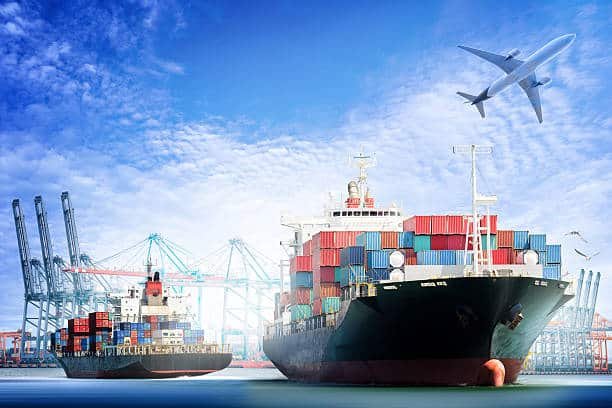
It is at Mogadishu Port that Somalia receives most of its international merchandise. The Berbera Port in Somaliland has improved facilities and security, therefore Chinese shipments are now choosing it more often. Bosaso Port makes it possible to access northern Somalia and the Puntland region. The port in Kismayo serves the south of Somalia but its resources are scarce and security is uncertain.
Port infrastructure and limitations
While significant repairs have been done at Mogadishu Port, it still has problems with handling large cargo shipments and with the available equipment. Berbera Port provides the latest technology, including berths for big ships and handling equipment for containers. Bosaso port has the necessary infrastructure for small ships to handle cargo. Kismayo Port must be carefully secured since it has limited capacity to handle containers.
Security considerations at Somali ports
Because Somali ports are considered high risk, they all need security checks and this may increase the need for insurance. Usually, Berbera Port provides the top levels of security. Though Mogadishu Port is now safer, better coordination with authorities in the region is advisable. Bosaso and Kismayo ports may be protected better by planning their security and providing armed guards.
2.3 Shipping Routes
Common maritime pathways
Generally, the main one runs over the South China Sea to the Indian Ocean via the Strait of Malacca and goes across the Arabian Sea all the way to the Horn of Africa. When certain goods are involved or the security conditions require it, the Suez Canal may be used in specific alternative routes.
Transit times between major port pairings
It takes Shanghai about 25 to 30 days directly to Mogadishu, 30 to 35 days via transshipment in Shenzhen, 28 to 32 days directly to Berbera, 32 to 38 days with a transshipment to Mogadishu and 30 to 35 days directly to Bosaso, whereas Ningbo will take 32 to 40 days depending on the route and security.
Transshipment hubs (Dubai, Jebel Ali, Djibouti)
The main transshipment hub in Dubai is Jebel Ali Port which provides outstanding linkages and dependable services. The port of Djibouti links the region to the Somali ports by offering speedier transit. Shippers in Oman can use Salalah Port for transshipment which offers low rates.
Factors affecting route selection
The state of security, predicted weather, port delays and schedules of shipping lines enter into the choice of a route. The availability of carriers, insurance rules and how urgent the customers are matter a lot in making routing decisions.
3. Shipping Methods

3.1 Sea Freight
FCL (Full Container Load) shipping options
When shipping large quantities of goods, FCL proves to be the most economical solution and you can choose from 20-foot or 40-foot containers. Natural dry boxes can handle cargo that fits in any shipment, while others are specialized for items that have special needs.
LCL (Less than Container Load) consolidation services
LCL gives shippers who are not dealing in huge volumes the chance to use ocean freight rates by using shared space. In the ports of China, the bulk of consolidation takes place and unloading is handled mostly at the destinations.
Break bulk and project cargo options
They deal with items that are too big to fit in regular containers. Special solutions are provided for the shipping of heavy equipment, construction gear and building items.
Container types and specifications
You will often find that standard 20-foot containers (TEU) and 40-foot containers (FEU) handle most types of cargo. Loads with great height can fit into high-cube containers. They are used for goods that cannot stay at the same temperature.
Transit times (typically 25-35 days from China to Somalia)
Direct transport usually takes 25-30 days, while transshipment services may require 30-40 days due to different schedules and how full the ports are.
3.2 Air Freight
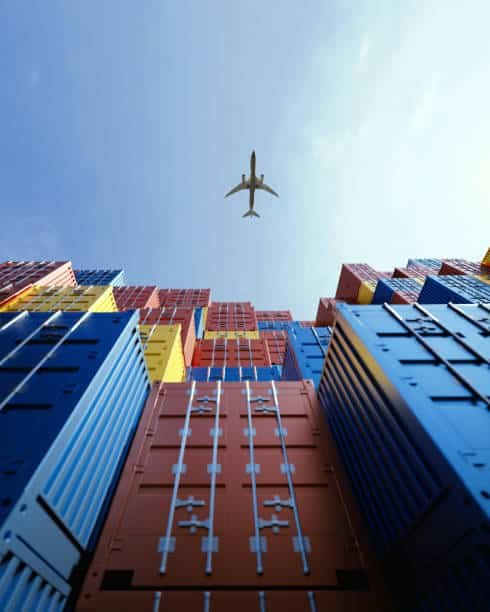
Available air cargo routes
Generally, your air cargo will travel through Dubai, Doha or Istanbul and make its way to Hargeisa or Mogadishu airport. Because direct air cargo services are limited, it is necessary to schedule and book your needs carefully.
Major airports and handling capabilities
The airport at Mogadishu handles most of the country’s air cargo with easy services. Hargeisa Airport in Somaliland provides passengers with different flight routes. The main transit airport in the region is Dubai International Airport.
Express vs. standard air freight options
You can choose express services that offer 3-5 days of transit with higher costs. Standard air freight usually delivers in 7 to 10 days including waiting for customs to clear the goods and it is more inexpensive.
Transit times (typically 5-10 days including customs)
For Express services, goods arrive at their destination in 3 to 5 days and for Standard air freight, it takes around 7 to 10 days with delays at customs possible. Regional links may require another 1 to 2 days.
3.3 Rail-Sea Combination
China-Europe railway connections with sea links
Rail delivery to European ports and then shipping the cargo to Somalia could help save time with specific goods. The train network reaches both Rotterdam and Hamburg for further transportation.
Potential time and cost benefits
Taking cargo by rail-sea instead of by ocean alone helps save up to 7 days and still maintains reasonable costs for appropriate cargo.
Limitations and considerations
Many types of cargo to Somalia cannot use the route because moving them is difficult and requires special attention. The best choice when you need to send expensive or urgent products.
3.4 Door-to-Door Services

Combined transportation solutions
Combining sea freight, air freight and ground transportation in the logistics process allows Chinese firms to smoothly send goods to consignees in Somalia.
Pickup services in China
This type of service makes pickup possible in key Chinese manufacturing areas, handling the factory pickup, export work and suitable paperwork.
Last-mile delivery in Somalia
Final-mile deliveries in Somali metropolitan areas are handled by local networks, but the area of coverage is often reduced in more isolated areas because of certain challenges.
Documentation and tracking processes
Thanks to digital tracking systems, the process is monitored closely and you can always know where and what condition your cargo is in.
4. Cost Factors and Considerations
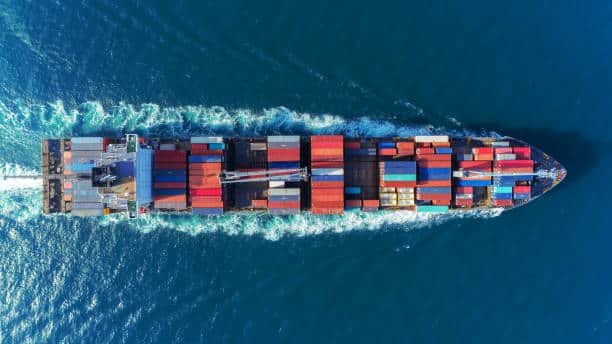
4.1 Freight Rates
Base shipping costs for different methods
The rates for shipping cargo on ocean freight are dependent on how big the container is, the route it follows and supply and demand. Removing items from big Chinese ports to Somalia by sea generally costs $1,500 to $3,000 for 20-foot containers and $2,500 to $4,500 for 40-foot containers.
Container size pricing (20ft vs. 40ft)
Container ships benefit from 40-foot containers if shipping in large numbers, because even though such containers are 40-60% higher in cost than 20 feet, they can hold twice as much.
Weight and volume calculations
Charges are calculated in ocean freight using the heavier weight or the bigger-sized weight as compared to the weight.
Peak season surcharges
The seasons of September to November and February to April are considered peak seasons and may add $200-$500 surcharges per container because of how many shipments there are.
Fuel adjustment factors (FAF)
Factors that influence bunker adjustments are influenced by fuel prices and may range from $100 to $300 per container depending on the current price of oil and the route being taken.
4.2 Additional Fees
Terminal handling charges (THC)
When containers are picked up in Chinese ports, origin terminal handling charges cost between $150 and $300 per unit. Often, destination terminal charges in Somalia come to around $200-$400 for every container.
Documentation fees
You can expect documentation processing fees to cost $50 to $150 per shipment for bill of lading, customs forms and certificates.
Insurance premiums
The standard coverage for marine cargo usually costs between 0.2 and 0.5 percent of the cargo value and the war risk coverage for Somalia destinations costs an extra 0.1 to 0.3 percent.
Customs security fees
Shipments in China face security screening fees and customs charges of $25-$75 and the same ones are charged in Somalia.
Port congestion surcharges
When the port is busy or capacity is low, shippers may be charged congestion surcharges, mostly in the range of $100-$300 for each container.
War risk surcharges (specific to Somalia)
The war risk fee on cargo for Somalia-bound goods is usually in the range of $50 to $200 per container, determined by present security and insurance factors.
4.3 Customs and Duties
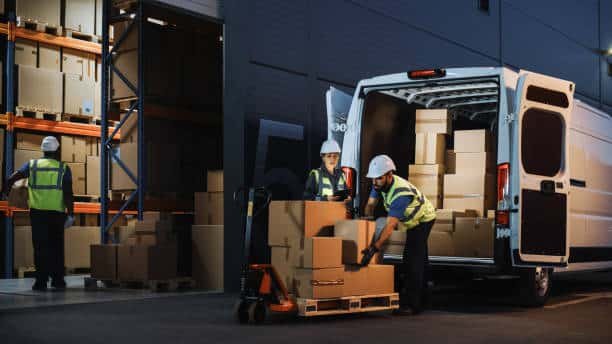
Chinese export duties and regulations
A lot of goods sent from China to Somalia have low export duties, but some goods may be subject to export licenses and possible restrictions.
Somali import tariffs and taxation
Import duties in Somalia are 5-25% based on the type of cargo and extra taxes and fees also vary by location and region.
Harmonized System (HS) code classifications
For both duty calculation and clearing customs, it is important to use the correct HS code which means you must give detailed product information.
Valuation methods and assessments
Traditionally, authorities use the WTO’s rules for customs valuation; however, each country sets its own understanding. Proper invoice paperwork and proof make the results of assessments more accurate.
Exemptions and special economic zones
There are cases where humanitarian shipments or particular development projects can avoid or lower duties after meeting all the necessary official requirements.
5. Documentation Requirements

5.1 Commercial Documents
Commercial invoice requirements
All commercial invoices are required to give a clear description of the product, list the quantity, specify the unit values, total values and explain the terms of sale. The company’s letterhead should be used for sending out invoices with the required signatures.
Packing lists specifications
They outline the contents of each container, the method of packing, the weight and the measurements. It’s important to connect each product to their related invoice reference.
Sales contracts and purchase orders
Sales contracts outline what needs to happen during the transaction, the delivery of goods and how to pay. They also serve as an additional proof of the nature of commercial relationships.
Certificates of origin
Certificates of origin confirm from where goods are manufactured and they can be required by countries and companies for certain benefits.
Product certifications and compliance documents
Electronics, food products and pharmaceuticals which are regulated goods, may need extra documents in the form of certifications, certificates and compliance records.
5.2 Shipping Documents

Bill of Lading (B/L) or Air Waybill
The document is both a title of the cargo and the agreement for transporting it. Air waybills have functions that are the same as road waybills for air freight shipments.
Sea waybill options
Not needing to give waybills to a courier service is possible for trusted consignees, plus processing document orders is faster because waybills aren’t needed for approval.
Forwarder’s cargo receipt
Forwarder receipts let the sender know that their cargo has been received and that documentation is being prepared.
Insurance certificates
They demonstrate the terms of coverage and list the steps to file a claim. Cargo sent to Somalia may have to have war risk certificates obtained separately.
Shipping instructions
Shipping instructions must include the way goods should be handled, where they must be delivered and how to reach the consignee.
5.3 Customs Documents
Import/export declarations
Using customs declarations, you can supply all cargo details, set the total value and find out the duties for both the Chinese export and Somali import process.
Customs valuation forms
Through valuation forms, the information on a transaction is fully explained and documented.
Duty payment receipts
When you get a payment receipt, it shows that duty has been paid and allows customs to release your goods.
Inspection certificates
Some commodities may require pre-shipment inspection certificates so you can confirm both the quality and quantity involved.
Import permits for restricted goods
Special permits are needed for the import of certain products, like telecommunications devices, medicines or food.
6. Customs Clearance Procedures
6.1 Chinese Export Customs
Export declaration process
It is standard for Chinese export customs to process declarations through China Electronic Port and declarations for ordinary goods usually take 1-2 days.
Inspection requirements
For some goods, unfamiliar exporters or a small part of all shipments, physical inspections are required and may add 1-3 days to the processing procedure.
Commodity-specific regulations
If you are dealing with electronics, chemicals or other regulated products, you might have to present additional certifications, approval forms or export permits.
Prohibited and restricted exports
Some categories of products going to Somalia may be affected by the lists of prohibited and restricted Chinese exports.
Export license requirements
Some types of strategic commodities, technology made in China and some raw materials might need export licenses from Chinese officials before being allowed to export.
6.2 Somali Import Customs

Import declaration procedures
The harbor procedures in Somalia are not the same everywhere, yet they commonly need you to declare your goods and offer all necessary documents in advance.
Customs valuation methods
Usually, valuation is done using the transaction value approach, but customs authorities can use other methods if they think the transaction values appear unclear.
Physical inspection protocols
Customs officials often need to inspect, unpack and examine cargos when importing goods to Somalia.
Duty payment methods
Usually, importers must pay duty fees with cash or a bank guarantee and credit is only possible for experienced importers.
Customs broker requirements
Because Somalia’s clearance is quite complex, professional customs brokers are considered important for dealing with customs regulations.
Managing informal payments and corruption risks
Having open and clear procedures and keeping good records, usually reduces the chance of corruption, but some bribery can still be found in many places.
7. Challenges and Risk Management
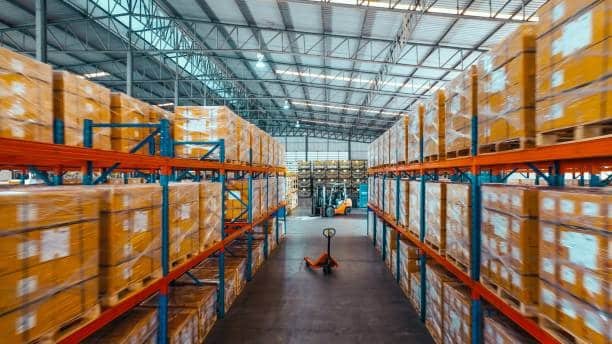
7.1 Security Concerns
Piracy risks in Somali waters
It is still a challenge dealing with piracy in Somali territory, yet international patrols have sharply lowered the frequency of attacks. Generally, ships obey the given shipping routes and make sure to keep their security measures up to date.
Security surcharges and precautions
These extra security fees for Somalia cover rising insurance costs and steps taken to ensure safety and they can add up to $300 per container.
Insurance considerations
It is necessary to secure marine insurance that covers war risks and this type of policy should be written by experts who are aware of Somalia’s trading environment.
Armed guards and vessel protection measures
There are cases where shippers hire armed guards or protection teams on their vessels when they cross dangerous sea routes and these expenses are included in the freight rate.
Safe transit corridors
With IRTC, there is safer transit through the Gulf of Aden, since there are navy vessels in the area watching and protecting.
7.2 Political and Economic Factors

Political instability impacts
Any changes in the political environment in Somalia can impact how ports work, customs operations and the overall economy, so these situations should always be watched and plans made for alternate actions.
Currency fluctuations
How the values of the Chinese Yuan, US Dollars and Somali Shilling change can cause changes in trading costs and methods.
Banking and payment challenges
Since banking systems are not well developed in Somalia, people may have to look for alternative ways like hawala or use banks in other nations.
Trade sanctions and restrictions
It is possible that trade actions or sanctions will affect some products or traders, so their compliance should be confirmed.
Diplomatic relations affecting trade
In most cases, diplomatic ties between China and Somalia support trade, but problems connected to local politics can occur sometimes.
7.3 Infrastructure Limitations
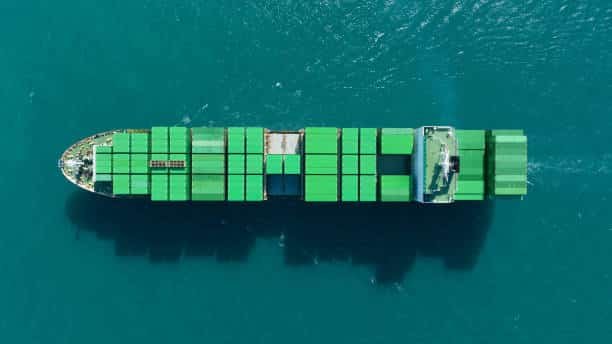
Port congestion issues
Because Somalia’s port is not very large, it can lead to delays when there are many large ships arriving at once.
Equipment shortages
Inadequate cranes and other tools at the ports can result in longer delays for cargo and greater expenses for handling.
Power supply inconsistencies
When there is unreliable power, handling goods and maintaining refrigerated containers can become a problem at Somali ports.
Road transport challenges in Somalia
The lack of good roads makes it hard to use roads for transport and leads to higher delivery costs and longer waits.
Warehouse and storage limitations
When there is not enough storaging space at warehouses, cargo clearance and delivery should be arranged without delay in Somalia.
8. Freight Forwarders and Shipping Companies
8.1 Major Service Providers
Chinese freight forwarders specializing in African routes
When it comes to African logistics, players such as Sinotrans, COSCO Logistics and China Foreign Trade Transportation are the main Chinese forwarders with the related expertise.
International shipping lines serving Somalia
Customers can count on MSC, CMA CGM and ONE for frequently serving Somalia and offering both various route options and cost-effective rates.
Local Somali logistics partners
Local teams we trust help with all the paperwork at customs, move cargo inside the country and ensure delivery runs smoothly.
Evaluation criteria for selecting providers
Important parts of such services are how dependable they are, how much skill they have in the region, how secure they are, their insurance and how competitively priced they are.
8.2 Services Offered
Consolidation services
Because of LCL consolidation, even small shippers can make use of ocean freight and pay for a portion of a container.
Customs brokerage
Managing incoming and exported goods and merchandise requires correct documentation and proper procedures which customs brokerage handles for both China and Somalia.
Insurance arrangements
The company’s broad insurance policy includes risks at sea, risks of war and theft, while their claims team is available in various languages.
Warehousing options
Services in both these countries include packing goods together, moving them and giving temporary storage space.
Tracking and visibility solutions
Real-time tracking systems make it possible to follow your cargo all the way from pickup to delivery, while the system helps deal with exceptions.
Last-mile delivery coordination
At the end, local delivery networks make sure consignees get products with the necessary documentation and proof of delivery.
9. Special Cargo Considerations
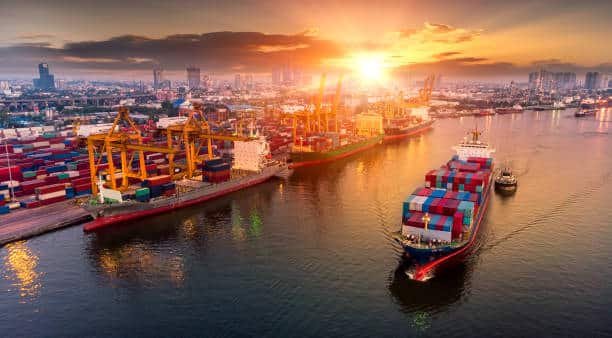
9.1 Dangerous Goods
Classification and handling requirements
IMDG Code rules state that dangerous goods must be correctly classified and handled with specific procedures for stowing or storing them.
Documentation and labeling
Documentation such as declarations for dangerous goods, material safety data sheets and appropriate labeling is always necessary.
Restrictions and prohibitions
Travelers may have trouble sending certain dangerous goods to Somalia because of security or regulatory issues.
Specialized container requirements
Sometimes, dangerous goods need to be put in special containers, separated from the rest of the cargo and stored in particular spots.
IMDG Code compliance
When all parts of International Maritime Dangerous Goods Code are properly followed, there are no safety risks and legal rules are met.
9.2 Temperature-Controlled Cargo
Reefer container availability
Being able to get a refrigerated or cold container for Somalia can be a challenge. Therefore, advance reservations are recommended.
Cold chain maintenance challenges
Because of issues with electricity and equipment, Somalia’s cold chain is not always reliable.
Temperature monitoring options
Through these systems, you can constantly monitor the temperature of your temperature-controlled products and get alerts if there are any problems.
Pharmaceutical and food product considerations
Pharmaceuticals and food items for Somalia must be handled, documented and comply with regulations.
Power supply for refrigerated containers in Somalia
Before the vessel arrives at the port, it is important to confirm that power will be on hand for upkeep of refrigeration.
9.3. Oversized and Project Cargo
Break bulk shipping options
For goods that are too big for standard containers, break bulk services handle them using either common vessels or specific equipment.
Heavy lift capabilities
Heavy lift operations are handled using specific vessels and port machinery and attention must be paid to the organizational process for loading and unloading.
Special equipment requirements
Handling big loads may mean using cranes, heavy lift tools and specialized moving tools.
Route and port limitations
Freight that is too large can only use some routes and ports which must be planned in advance.
Scheduling and planning considerations
It takes time and teamwork with different partners such as ports, officials and transport providers to manage project cargo.
10. Optimizing Shipping Strategies
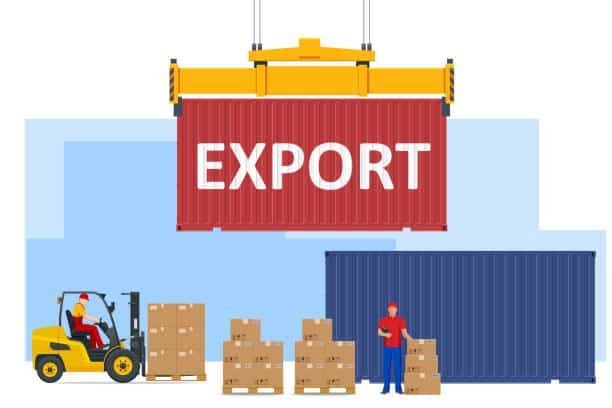
10.1 Consolidation Options
Buyer consolidation opportunities
Consolidating cargo by several suppliers at the origin gives a good chance to save on freight and cut down on expenses.
LCL consolidation services
Hiring consolidation services makes it possible for small companies to ship goods on oceans while sharing charges with other companies.
Shared container arrangements
If their cargo is compatible, shippers can fill the container space together to make things more efficient and keep the environment safe.
Cross-trade shipping possibilities
An alternative way of transporting some types of cargo through third countries may be more cost-efficient or faster.
10.2 Timing Considerations

Chinese holiday impact (CNY, Golden Week)
Production and shipping schedules are greatly affected by the days around the Chinese New Year and Golden Week which means companies must plan activities and stock ahead of time.
Peak season planning
During the busiest times for shipping, organizations need to book in advance and possibly deal with greater expenses and longer waiting times.
Port congestion avoidance
This way, products can arrive when space is available in the port and delays can be avoided or lessened.
Weather-related scheduling
Bad weather and rainy seasons are unpredictable which may lead to changes in the shipping schedule and transit time, so companies must change their plans accordingly.
Ramadan and local holiday impacts in Somalia
Since some local holidays and religious events influence things in Somalia, this may delay or alter the usual process at ports and customs.
10.3 Cost Reduction Strategies

Volume negotiation tactics
Combinations of numerous smaller shipments and yearly commitment to volume can lead to lower freight prices and higher service quality.
Long-term rate agreements
With these contracts, you secure consistent rates and first consideration when dealing with the freight forwarder and shipping line.
Alternative routing options
Using different ports or routing methods could result in cost reduction or better services.
Packaging optimization
Sustainable packaging can help cut down on shipping volume and space which may lower the overall shipping price.
Customs valuation strategies
The right approach to valuing goods and filling out necessary customs forms may lower your duty costs without breaking the law.
11. Technology and Tracking Solutions
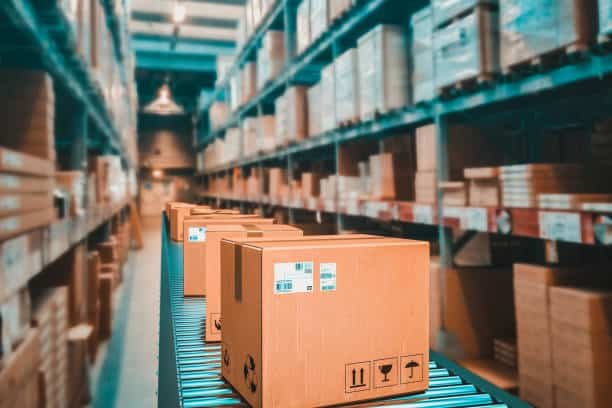
11.1 Shipment Visibility
Container tracking systems
In-depth systems allow users to know their containers’ location and condition in real time throughout the shipping phase.
Real-time monitoring options
With GPS and IoT sensors, it is possible to keep track of goods all the time and know right away if anything is delayed or goes off course.
GPS and IoT applications
Smart sensors help monitor temperature, humidity, shock and the location of sensitive cargo being shipped.
Documentation management platforms
All documents are processed, stored and shared easily on digital platforms by all people involved in shipping.
Customs status verification tools
Watching customs progress and updates is possible in real time using online systems.
11.2 Digital Documentation

Electronic Bill of Lading initiatives
Using electronic bill of lading systems cuts the time needed for processing and gets rid of the need for physical delivery.
Digital customs submission options
With electronic customs declaration systems, it is possible to process goods faster and gather less paperwork.
Blockchain applications in shipping
Blockchain ensures that all records of shipments and their transactions are kept safe and transparent during the supply chain process.
Electronic signature recognition
Approving and signing documents remotely is made possible by digital signatures.
Data security considerations
Strong cybersecurity helps to keep vital information safe while businesses and individuals use technology.
12. Future Developments
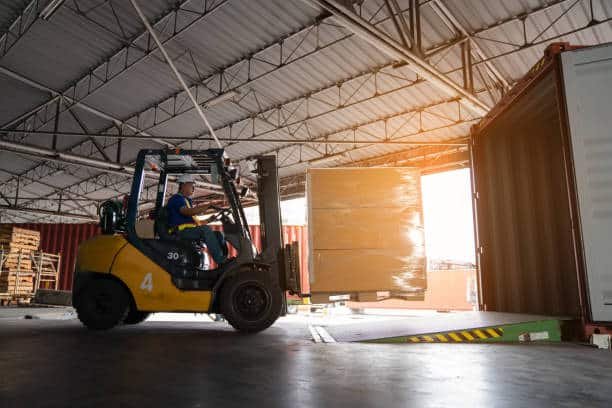
12.1 Infrastructure Improvements
Somali port development projects
Somalia’s port authorities are currently involved in developing major ports to raise their efficiency, capacity and security.
Chinese Belt and Road Initiative impacts
There is a possibility that investments under the Belt and Road Initiative may modernize how China and Somalia trade and move goods.
Transport corridor developments
Fixing roads and railways in a region might help people travel more and lower the cost of transportation.
Technology implementation at ports
The introduction of automated systems and digital solutions will speed up work and make everything more efficient.
12.2 Trade Agreement Evolution

Bilateral trade agreement developments
Trade deals that are being developed between China and Somalia might result in benefits and less complex procedures for either side.
African Continental Free Trade Area (AfCFTA) implications
The implementation of AfCFTA could lead to new chances for China and Somalia to trade more with each other.
Chinese trade policy shifts
How China deals with trade and other countries can affect Somalia’s trading environment.
WTO and international trade regulation changes
Regulatory changes in international trade may bring about changes in the requirements for documents and the way businesses make deals.
13. Resources and Contacts
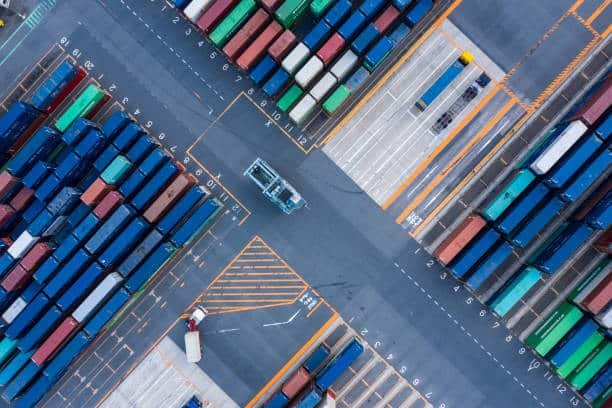
13.1 Government Agencies
Chinese customs and export authorities
Through the official websites and regional offices of Customs, China shares the procedures, regulations and details for meeting compliance.
Somali import authorities
Somalia National Chamber of Commerce and specific ministries make available the necessary information about regulations and procedures for imports.
Trade promotion organizations
CCPIT and organizations with the same purpose offer assistance in facilitating international trade.
Embassy commercial sections
The Chinese Embassy and the Somali diplomatic missions in China help companies by offering trade information and support.
15. Conclusion
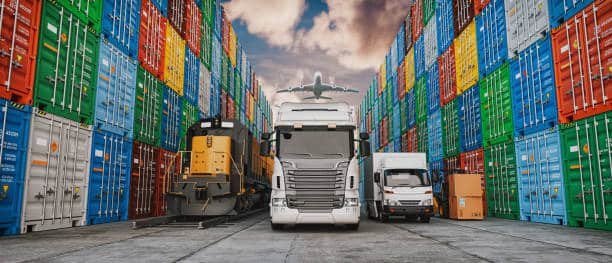
Key considerations for successful China-Somalia shipping
For shipments from China to Somalia to go smoothly, you need to plan well, have all the necessary documents, choose good partners and handle all risks. Knowing the local situation, the necessary rules and safety measures is important for anything to go well.
Balancing cost, time, and risk factors
To be effective, shipping strategies work to keep prices low, guarantee good service and protect against risks. Security, insurance and delays are among the factors shippers must check as they choose transportation alternatives.
Importance of reliable partners and thorough planning
Complex procedures and issues in a country can be managed through the help of professional freight forwarders, customs brokers and local partners. Good planning and having a backup plan help make sure cargo is delivered successfully.
Future outlook for this trade corridor
The corridor between China and Somalia is expected to see fast growth as infrastructure develops and stability increases. The commitment of Chinese capital and Somalia’s effort to restore areas will likely raise the number of ships and enhance the services offered on routes.
Related Reading: Shipping from China to Djibouti

